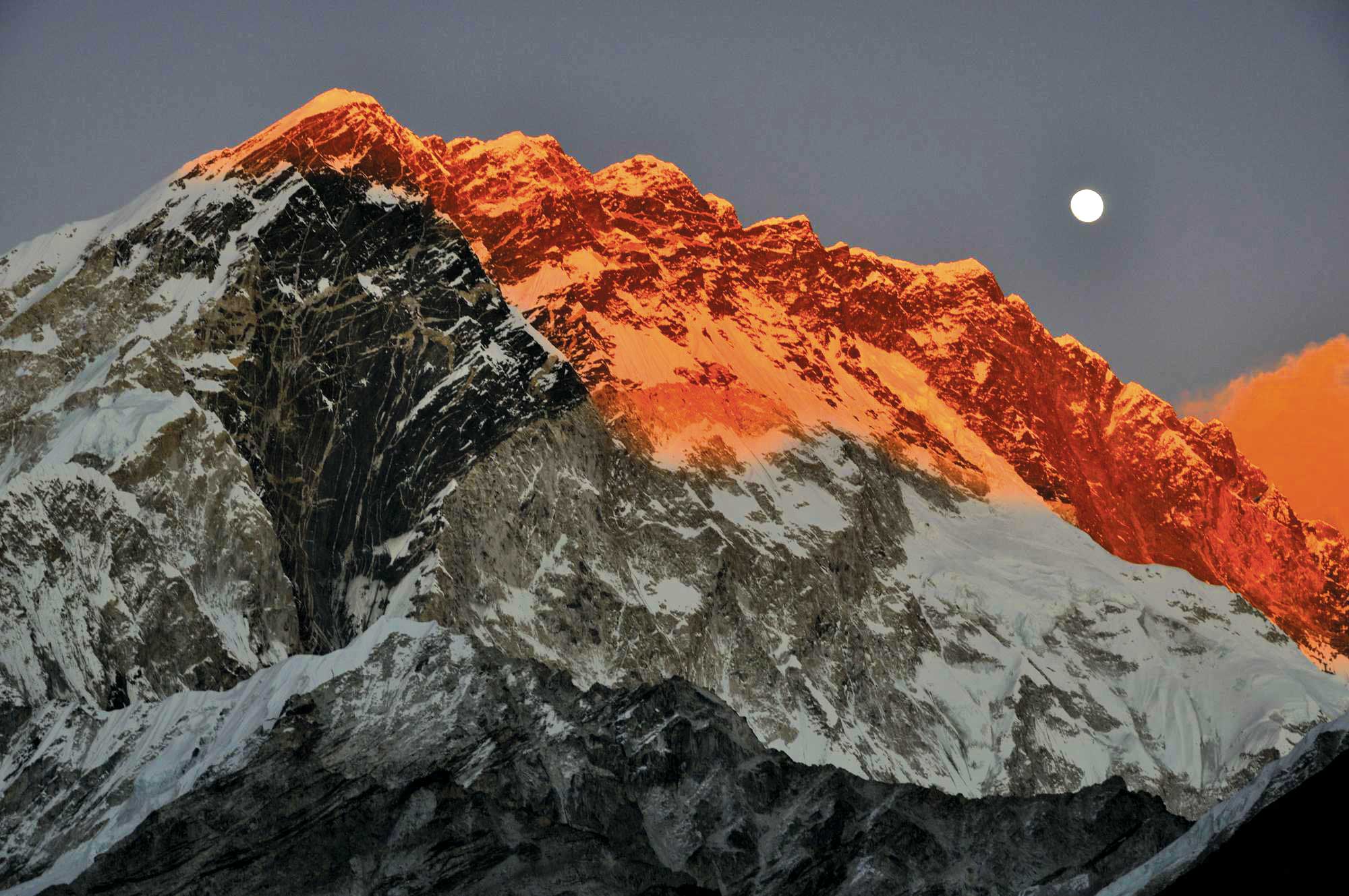As the planet warms and Himalayan glaciers melt, a small miracle is taking place. On the boulders and rubble that are exposed by melting ice, pioneering wildflowers are colonizing the new land. This is an extreme environment with essentially no soil and with freezing temperatures much of the year. The substrate shifts unpredictably as boulders settle and the underlying ice continues to melt. Living on the edge of biological possibility, these extraordinary wildflowers are not just hanging on by a thread – they are thriving, sometimes extravagantly. These species have special adaptations to deal with the challenging environment, such as long elastic roots, wind-proof exteriors, and an array of special enticements to attract scarce pollinators. Many of the flowers are valuable in Tibetan medicine or as incense, but these are rare specialist species and should be enjoyed by visitors with camera and eyes only.
Photographing these glacier wildflowers is a thrill, but not recommended for everyone. The following photographs were taken on the glaciers of eastern Nepal during the height of the monsoon, traversing treacherous melting ice and shifting boulders, often far from any trail. I like to look at flowers the way a pollinator might, from close up and at ground level. So if you are out hiking around Sagarmatha or Makalu, and you see a body sprawled on the ice or tucked into a rock crevice, come say hello!
_rt.jpg)
Delphinium glaciale Hook.f. & Thomson, Glacier Larkspur, (Ngozumpa Glacier, 22 August 2017)
Note the aerodynamic profile of this plant, which helps protect it against high winds. The juice of the plant is useful in getting rid of ticks on livestock.
cr_rt.jpg)
Senecio albopurpureus Kitam., Scree ragwort (Ngozumpa Glacier, 17 August 2017) This highly fragrant yellow flower has long underground stems (rhizomes) that put out lateral shoots and allow it to hold on to the shifting substrate.
_rt.jpg)
Saussurea gossypifera D. Don, Snowball plant, (Ngozumpa Glacier, 18 August 2017)
This unusual plant has a fascinating adaptation to encourage pollination in a zone where flying insects are few. The cotton-like hairs weave together, leaving a small hole at the top for pollinators to enter, where they find a little insulated "room" with purple flowers for a floor. Here the insect can enjoy a respite from cold, wind, and rain outside, while it pollinates the flower. This plant is considered sacred by Buddhist lamas, and is used as "lupje" or incense for the naga deity.
_rt.jpg)
Saussurea tridactyla Sch.Bip. ex Hook.f., Snow lotus (Changri Glacier, 22 August 2017)
Dense cottony hairs provide insulation from extreme cold and wind in the harsh environment. Like many alpine plants, this species grows slowly over many years. It is threatened by over-harvesting for medicinal uses.
_rt.jpg)
Saussurea simpsoniana (Fielding & Gardner) Lipsch., Cotton lotus, (Khumbu Glacier, 23 August 2017)
This plant insulates its upper parts with densely woolly hairs and a rounded upper surface to funnel the wind overhead. This species is threatened by over-harvesting for medicinal use. The whole plant is used to treat boils.
_rt.jpg)
Waldheimia glabra (Decne.) Regel, Smooth ground daisy, (Mingbo glacier, 30 August 2017)
This aromatic plant tucks itself into cracks between rocks to escape the cold winds. The Sherpa name chupö means "water incense." In Sherpa culture, dried plants are used to give a pleasant fragrance to stored blankets or clothing. In Rai culture, shamans (dali) make a paste from the root and put it in an amulet to protect against evil spirits and sickness.
_rt.jpg)
Oxyria digyna (L.) Hill, Mountain sorrel, (Ngozumpa glacier, 18 August 2017)
This panarctic-alpine plant will be a familiar sight to plant-lovers who have hiked in the European Alps, North American Cascades or Sierra Nevada ranges. Leaves are eaten raw or cooked, or given to livestock as fodder. The leaves are high in both Vitamin C and oxalic acid. All parts of the plant are used in the treatment of dysentery.
cr.jpg)
Arenaria glanduligera Edgew. ex Edgew. & Hook.f., Gland-bearing sandwort (Ngozumpa glacier, 16 August 2017)
Tucked into rock crevices, this small fragrant wildflower shelters from wind and cold but risks exposure when the rocks shift.
_rt.jpg)
Stellaria decumbens Edgew., Alpine stitchwort (Barun glacier, 6 August 2014)
Stellaria decumbens is listed in the Guinness Book of Records as the highest altitude plant species in the world at 6135 m, though A.F.R. Wollaston awards the honor to Arenaria bryophylla at 6180 m in his book Mount Everest, The Reconnaissance, 1921. In 1935, Eric Shipton collected Saussurea gnaphalodes at 6400 m on his attempt of Mount Everest from Rongbuk, and discovered a species new to science, Lepidostemon everestianus, nearby. French botanist Cédric Dentant recently identified plant fragments collected by Albert Zimmermann during the 1952 Swiss expedition to Mount Everest. These plants were growing in rock crevices in the western cwm at 6350 m and thus added two more species to the list of contenders for “highest known vascular plant:” Saxifraga lychnitis var. everestianus and Androsace khumbuensis.











